Best full-frame camera 2024: the top big sensor DSLRs and mirrorless cameras
How to find the best full-frame camera
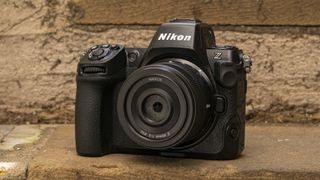
Full-frame is still regarded as the holy grail of sensor formats in 2024’s mirrorless and DSLR cameras, with the latest and greatest models offering superb image quality in any light and speedy performance. The format isn’t just for professionals and/or those with high-end budgets either, with a number of affordable options included in this guide.
We’ve whittled the best full-frame mirrorless and DSLR cameras to 12 entries covering a range photo and video needs and budgets, where you’re into sports, landscapes or a bit of everything. Sony’s A7 IV stalwart remains a superb all-rounder with 33MP still and powerful video performance, while Nikon wowed us with the Z8 that’s extremely capable for just about everything, period, and comes in much cheaper than the Z9.
There are so many other great options out there not included in this list, too, such as the Canon EOS R6 II and Nikon Z6 II all-rounders and the supremely powerful Sony A1. We keep this guide regularly up to date with the latest models, and do scroll down to the bottom of the guide for more full-frame camera info and buying advice.
- Check out our guide to the world's best cameras for photography
Best full-frame cameras in 2024
Why you can trust TechRadar
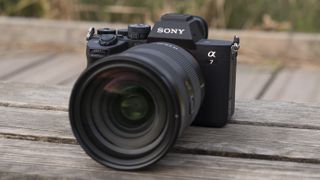
Specifications
Reasons to buy
Reasons to avoid
Sony’s A7 III has long been a full-frame favorite among enthusiasts, so improving on its superb skill set was never going to be easy – but the A7 IV more than delivers. A price increase means it’s not quite the entry-level option that its predecessor was, but there are plenty of improvements to justify the inflation. While a new 33MP sensor doesn’t dramatically improve the quality of still images, it does contribute to a versatile shooting experience that’s better all round.
Powered by a Bionz XR processor, this is a hybrid camera that’s good in almost any situation. Though there’s a crop on 4K footage, Eye AF and 10-bit support also give it proper video chops. Sure, it’s not the easiest camera for beginners to get to grips with. Nor is it the best value for purist stills photographers. But add a huge CFexpress card buffer into the mix and the Sony A7 IV shapes up as a compelling full-frame all-rounder.
- Read our in-depth Sony A7 IV review

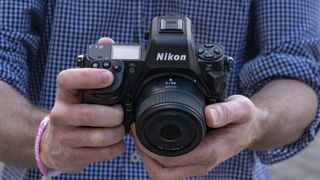
Specifications
Reasons to buy
Reasons to avoid
The 5 star-rated Nikon Z8 takes all that's great about the Z9 that made it our camera of the year 2022, and squeezes that powerful performance into a smaller and cheaper package. It's one of the most capable mirrorless cameras money can buy and the more sensible option of those two models for most people.
Like the Z9, the Z8 features the quickest-ever stacked sensor, while it doesn't have a mechanical shutter. What does that mean? You get superb shooting speed with no distortion in fast-moving subjects: 20fps burst shooting at full-quality or up to 120fps if you’re happy with 11MP output.
In testing, we found the Z8 to be a superb hybrid camera, producing pin-sharp 45.7MP stills and fantastic 8K video up to 60fps. It marries speed and quality perfectly. The 61MP Sony A7R V might have better detail, but it's twice as slow in general.
Elsewhere, we did find battery life a little limited in testing – that's where the larger Z9 battery shines – while in-body image stabilization is only OK. Otherwise, you'll struggle to find a more capable hybrid full-frame camera.
- Read our in-depth Nikon Z8 review


Specifications
Reasons to buy
Reasons to avoid
A dead-ringer for the Nikon Z6 (above), Nikon’s latest large-sensor effort is the best entry-level full-frame mirrorless camera on the market. As a beginner’s option, it ticks a lot of boxes. Its weather-sealed body features a big, comfy grip and a neat control layout that’s accessible in the hand, with a 3-inch tilting touchscreen that makes menu navigation a cinch. The 24.2MP full-frame sensor inside serves up lovely images in a range of shooting scenarios, while the large, bright EVF is fantastic for framing shots. Autofocus is very impressive, too, with the 273-point hybrid system working well for both static and moving subjects. There are some compromises, though: the 4.5fps burst speed is underwhelming, while a 1.7x crop on 4K footage is disappointing. And if you regularly shoot in low-light, the back-illuminated sensor of the Z6 performs better at higher ISOs. Still, the Z5 delivers plenty for those looking for their first full-frame camera – provided you have a healthy budget. It’s pricier than several rivals and, as the cost of the older but more capable Z6 continues to fall, buyers will have a tricky choice to make.
- Read our in-depth Nikon Z5 review

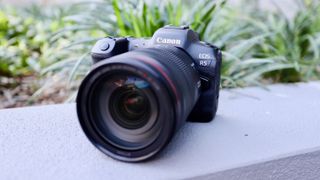
Specifications
Reasons to buy
Reasons to avoid
As its spec sheet confirms, the new Canon EOS R5 is an incredibly powerful tool. In fact, it’s Canon’s best mirrorless camera to date. The 45MP full-frame sensor is exceptional, producing superlative images in low light, with fantastic noise-handling even past ISO 4000.
Next-gen Dual Pixel autofocus, backed up by Canon’s Digic X processor, is similarly excellent, with outstandingly accurate tracking and animal detection skills that will blow away safari shooters. The electronic shutter also delivers rapid 20fps continuous shooting, completing a package that’s as capable on the street as it is in the studio.
Less solid are its hybrid credentials: while it’s hard to ignore 8K footage at up to 30fps – and 4K at up to 120fps – the R5’s versatility for videographers is limited by heat restrictions on recording times, with long ‘cool down’ periods. What’s more, the EOS R5 represents a serious investment, especially if you shell out for the speedy CFexpress cards needed to unlock its ultimate performance. But if money is no object, it’s arguably the top full-frame option for stills photographers.
- Read our in-depth Canon EOS R5 review


Specifications
Reasons to buy
Reasons to avoid
If you're not tied to Nikon, Canon or Sony, then Panasonic has been giving photo and video creatives plenty of reason to go with Lumix lately. It's cameras offer excellent bang for buck, especially for video, while there are a decent choice of affordable L-mount lenses, too.
We rate the S5 II as the best full-frame video camera for most people. During our tests it delivered rich and detailed 6K/30p footage with wide dynamic range thanks to the various color profiles, with real time luts being a standout feature, and 10-bit recording across almost all resolutions. The cherry on the cake is recording from the full width and height of the sensor (also known as 'open gate') which means you keep more detail when shooting in vertical formats for social than cameras like the Nikon Z8 that are stuck to 16:9 or wider. Panasonic has also been adding useful new features via firmware updates, such as proxy recording.
Elsewhere, the rugged S5 II was Panasonic’s first ever mirrorless camera with phase detection AF for video, addressing the previous downside to the system. You get staggeringly good image stabilization which we found smooths out shakes effectively for run-and-gun video, but there is a 1.5x crop on 4K/60p video which is a shame. There's also a costlier Lumix S5 IIX version to consider which has a few extra video-centric features.
- Read our in-depth Panasonic Lumix S5 II review

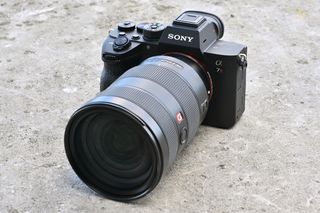
Specifications
Reasons to buy
Reasons to avoid
The A7R IV is the studio-friendly camera in Sony’s full-frame line-up, albeit one that's just as at home shooting action or landscapes. It has an extremely high resolution 61-megapixel sensor, up from 42.4 megapixels in the last version. Such a high pixel count lets the camera retrieve incredible amounts of detail when mounted to a sturdy tripod, in controlled lighting. Noise predictably creeps in more quickly than in a lower-resolution full-frame model, but this is an excellent all-round camera. And while it demands careful shooting for the best results, effective stabilization means it still works well handheld. 4K video quality is great too, aside from some rolling shutter effect. You also get an AI autofocus chip that delivers industry-leading autofocus performance.
- Read our in-depth Sony Alpha A7R IV review

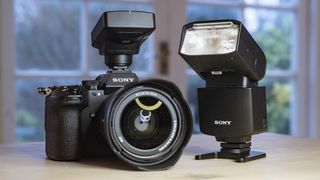
Specifications
Reasons to buy
Reasons to avoid
One of the more exciting tech developments in cameras of recent years can be found in the Sony A9 III, which is a whole new type of mirrorless camera with a global shutter. You can learn more about this tech in our in-depth review, but the fruit of it is fastest-ever burst shooting up to 120fps in full-quality, no distortion in fast-moving subjects, and flash sync at any shutter speed. It simply is next-generation performance.
There's a slight image quality trade-off in using a global shutter which means the A9 III isn't for everyone – especially if you don't need its industry-leading performance – but it's undoubtedly the best mirrorless camera for high-speed action and flash photography, backed up with the most reliable autofocus we've ever used.
In addition to the impressive features, the A9 III is Sony’s best-designed mirrorless camera yet, although the use of slower CFexpress type A cards is a bottleneck preventing the best possible performance. Overall, the A9 III has been one of the most fascinating cameras to use this year.
- Read our in-depth Sony Alpha A9 III review

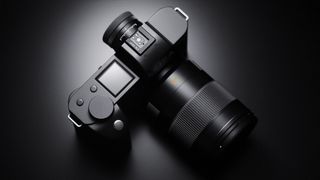
Specifications
Reasons to buy
Reasons to avoid
Leica’s most mainstream mirrorless camera to date, the SL2 still offers a look and feel like no other full-frame mirrorless camera.
It’s a weighty beast, but a redesigned handgrip and control panel layout promise excellent ergonomics, complimented by a minimalist array of unmarked, fully customizable buttons and a refreshed user interface. It handles comfortably and feels wonderfully premium, with a distinctive shell milled from durable aluminum and magnesium alloy.
There’s been an even greater overhaul on the inside: the Leica SL2 gets a new 47MP sensor, a new Maestro III processor, a new 225-point autofocus system and a new EVF. It all makes for a package that’s as fast and accurate as any of its Japanese rivals, delivering crisp images, plenty of dynamic range and excellent color reproduction.
Add sensor-shift in-body image stabilization into the mix, together with 5K footage at 30p and full-width 4K DCI and UHD at 50p, and the SL2 shapes up as an impressively versatile tool. The price reflects both the camera’s quality and that undeniable Leica experience – but the SL2 is also refreshingly accessible, and delivers some pretty special results.
- Read our in-depth Leica SL2 review

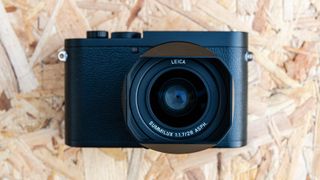
Specifications
Reasons to buy
Reasons to avoid
For most people, the Leica Q2 Monochrom makes no sense. It only shoots in black and white, yet costs more than its very capable and full-color Q2 cousin – which means it’s extremely expensive. But in the slim niche that it occupies, the Q2 Monochrom is also an outstanding camera.
If you’ve long lusted after Leica machinery, it represents a more affordable option than an M10 or M10 Monochrom. Despite its compact shell, the Q2 Monochrom is heavy in the hand, with a solid build that oozes class. Its matte black body and minimalist control interface are Leica hallmarks, yet an intuitive menu system, together with ‘modern’ features such as autofocus and Wi-Fi, make shooting and sharing simpler. The Q2 Monochom’s unique combination of a 47.3MP full-frame sensor with a fixed focal length Leica Summilux 28mm f/1.7 lens produces exceptional results.
With no color array and no interpolation algorithm, still images have an outstanding purity. There’s significantly less noise than standard cameras, so it’s safe to shoot at the maximum ISO of 6400 in everyday scenarios, making the Q2 Monochrom perfectly suited to street photography. The ‘standard’ Q2 is more mainstream, but if black and white is your bag, the Q2 Monochrom certainly makes a statement.
- Read our in-depth Leica Q2 Monochrom review


Specifications
Reasons to buy
Reasons to avoid
Canon’s flagship DSLR the EOS 1D X Mark III is the fastest there ever will be of its kind, what with Canon and Nikon now focusing on mirrorless camera tech instead. It remains a formidable camera in every way: being built like a tank, equipped with pro sports features for photographers on location, and with superb battery life.
There's no quicker mechanical shutter in the business (with no distortion in fast-moving subjects like you get with an electronic shutter used in other cameras for high-speed photography), rattling off at 16fps and backed up by the 1DX III's practically unlimited buffer. Sports, wildlife, any kind of action in any kind of inclement weather, the EOS 1DX Mark III can do it all.
Besides its 20MP stills, video capture is impressive with 4K/60p capture available, plus Canon's deep-learning autofocus works a treat. It being a DSLR we don't get in-body image stabilization, plus the 1DX Mark III remains one of the most expensive full-frame cameras ever, but for pros that love the DSLR experience, they won't find any better.
- Read our in-depth Canon EOS 1DX Mark III review

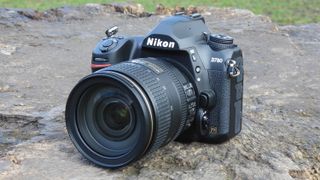
Specifications
Reasons to buy
Reasons to avoid
Don’t believe the naysayers: the DSLR isn’t dead and the Nikon D780 proves it. One of the best full-frame cameras you can buy, it delivers a fantastic shooting experience that should appeal to fans of DSLR handling, while also offering many modern features familiar to mirrorless users. Its sturdy, water-resistant magnesium alloy body might be big and heavy, but the trade-off is a satisfyingly chunky grip. Image quality from the D780’s full-from 24.5MP sensor is truly fantastic, too, aided by Nikon’s EXPEED 6 image processor. Exposures are nicely balanced, courtesy of a metering and scene recognition system borrowed from the D850, while the 273-point on-chip phase detection system – as used by the mirrorless Z6 – ensures fast and reliable autofocus performance when using Live View on the tilting touchscreen. The lack of in-body image stabilization is a shame, but superlative battery life rounds out what is a superb – if pricey – full-frame all-rounder.
- Read our in-depth Nikon D780 review
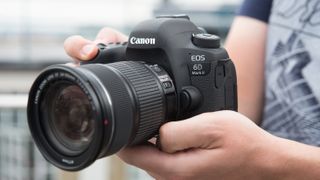
Specifications
Reasons to buy
Reasons to avoid
When the original EOS 6D launched, it offered the best bang for your buck and that trend continues with the second generation DSLR – the EOS 6D Mark II still offers an an excellent entry into the full-frame market. Released in 2017, it has a significant bump in features over it's predecessor, including a higher sensor resolution at 26.2MP, a better autofocus system with 45 cross-type AF points, 6.5fps burst speed and introduces touchscreen functionality to the 6D line. Performance in the real world is smooth and you won't find much to complain about in terms of image quality. And you get all that for around $1,500 / £1,349 / AU$1,999, which is very good value for money.
- Read our in-depth Canon EOS 6D Mark II review

Not sure whether to buy a DSLR or mirrorless camera? Check out our guide video below.

How to choose the best full-frame camera for you
There are several things to look for when choosing the right full-frame camera for your needs and budget. Every full-frame camera will feature a larger sensor than an APS-C or Micro Four Thirds model, meaning you should benefit from improved image quality and enhanced low-light performance. But there are a few key specs to look at in addition.
While sensor resolution is an important consideration, it’s not always an indicator of outright image quality. The Sony A1, for example, features a 50.1MP resolution for capturing stunning stills. In contrast, our favorite full-frame camera right now – the Canon EOS R6 – only features a 20.1MP resolution, but that lower pixel count means bigger pixels, which can translate into better light sensitivity for shooting in dim scenes.
Another key factor to keep in mind is the physical dimensions of a full-frame camera. Due to the size of the sensor, full-frame cameras are inevitably larger than most mirrorless and premium compact models. That said, some are bulkier than others. The Nikon D780, for example, is big and heavy, but the trade-off is a chunky, comfortable grip. On the flip side, the Panasonic Lumix S5 manages to squeeze a full-frame sensor into a Micro Four Thirds-style body that’s small yet ergonomic – and more convenient to carry.
As for other considerations, these are the same as for any other camera purchase and will depend primarily on your style of shooting. Whether you need a tilting touchscreen or a fully articulating screen, for example, will come down to how you like to frame your shots. Equally, the relevance of 4K (or even 8K) video resolution will be determined by your desire to shoot footage with your full-frame camera. It’s a similar story for connectivity and live-streaming features.
Of course, budget will often be the most important factor, but value isn’t always easy to determine. While entry-level models are usually cheaper, a more advanced but accessible camera is likely to go further with you on your photographic journey. Equally, slightly older models may not offer the most cutting-edge specs, but many continue to represent excellent value. It’s also a good idea to keep lens availability in mind: a full-frame camera with support for a wide range of compatible lenses will offer greater creative flexibility.
Are full-frame cameras better?
There are many reasons why you might want to buy a full-frame camera. As the name suggests, the primary advantage is sensor size. Full-frame sensors are substantially larger than those found in APS-C, Micro Four Thirds and compact cameras.
That extra sensor size can be used in a few ways. Some full-frame cameras fill their sensor with more pixels, to record stills at higher resolutions. The Canon EOS R5 shoots images at a 45MP resolution, for example, while the Sony A1 captures snaps at 50.1MP.
Alternatively, a full-frame sensor with a lower resolution can benefit from bigger pixels, which can capture more light in a particular scene and enhance low-light performance.
Either way, full-frame cameras will generally be able to shoot higher quality images in a given scene, particularly in more challenging lighting. The trade-off is often body size, which needs to be larger to make space for the larger sensor. There are a few more compact full-frame camera options, such as the Panasonic Lumix S5, but travelers might find that a mirrorless model or premium compact is more suited to their needs.
Whether full-frame cameras are better in other ways will depend on what and how you like to shoot. A larger sensor doesn’t necessarily mean that a full-frame camera will shoot at higher burst speeds than a APS-C mirrorless model, for example, or that it will have faster autofocus. That’s why it’s important to consider all of a camera’s specs and features when selecting one that’s right for you, not just its sensor size.

How we test full-frame cameras
Buying a full-frame camera these days is a big investment, so every camera in this guide has been tested extensively by us. These days, real-world tests are the most revealing way to understand a camera's performance and character, so we focus heavily on those, along with standardized tests for factors like ISO performance.
To start with, we look at the camera's design, handling and controls to get a sense of what kind of photographer it's aimed at and who would most enjoy shooting with it. When we take it out on a shoot, we'll use it both handheld and on a tripod to get a sense of where its strengths lie, and test its startup speed.
When it comes to performance, we use a formatted SD card and shoot in both raw and JPEG (if available). For burst shooting tests, we dial in our regular test settings (1/250 sec, ISO 200, continuous AF) and shoot a series of frames in front of a stopwatch to see if it lives up to its claimed speeds. We'll also look at how quickly the buffers clears and repeat the test for both raw and JPEG files.
In various lighting conditions, we also test the camera's different autofocus modes (including Face and Eye AF) in single point, area and continuous modes. We also shoot a range of photos of different styles (portrait, landscape, low light, macro/close-up) in raw and JPEG to get a sense of metering and its sensor's ability to handle noise and resolve fine detail.
If the camera's raw files are supported by Adobe Camera Raw, we'll also process some test images to see how we can push areas like shadow recovery. And we'll also test its ISO performance across the whole range to get a sense of the levels we'd be happy to push the camera to.
Battery life is tested in a real-world fashion, as we use the camera over the course of the day with the screen set to the default settings. Once the battery has reached zero, we'll then count the number of shots to see how it compares to the camera's CIPA rating. Finally, we test the camera's video skills by shooting some test footage at different frame-rates and resolutions, along with its companion app.
We then take everything we've learned about the camera and factor in its price to get a sense of the value-for-money it offers, before reaching our final verdict.
- Best camera
- Best entry-level DSLR
- Best DSLR
- Best mirrorless camera
- Best 4K camera
- Best compact camera
- What camera should I buy?
- Mirrorless vs DSLR: 10 key differences
- Camera rumors


Get daily insight, inspiration and deals in your inbox
Get the hottest deals available in your inbox plus news, reviews, opinion, analysis and more from the TechRadar team.

Tim is the Cameras editor at TechRadar. He has enjoyed more than 15 years in the photo video industry with most of those in the world of tech journalism. During his time as Deputy Technical Editor with Amateur Photographer, as a freelancer and consequently editor at Tech Radar, Tim has developed a deeply technical knowledge and practical experience with cameras, educating others through news, reviews and features. He’s also worked in video production for Studio 44 with clients including Canon, and volunteers his spare time to consult a non-profit, diverse stories team based in Nairobi. Tim is curious, a keen creative, avid footballer and runner, and moderate flat white drinker who has lived in Kenya and believes we have much to enjoy and learn from each other.
- Mark WilsonSenior news editor
